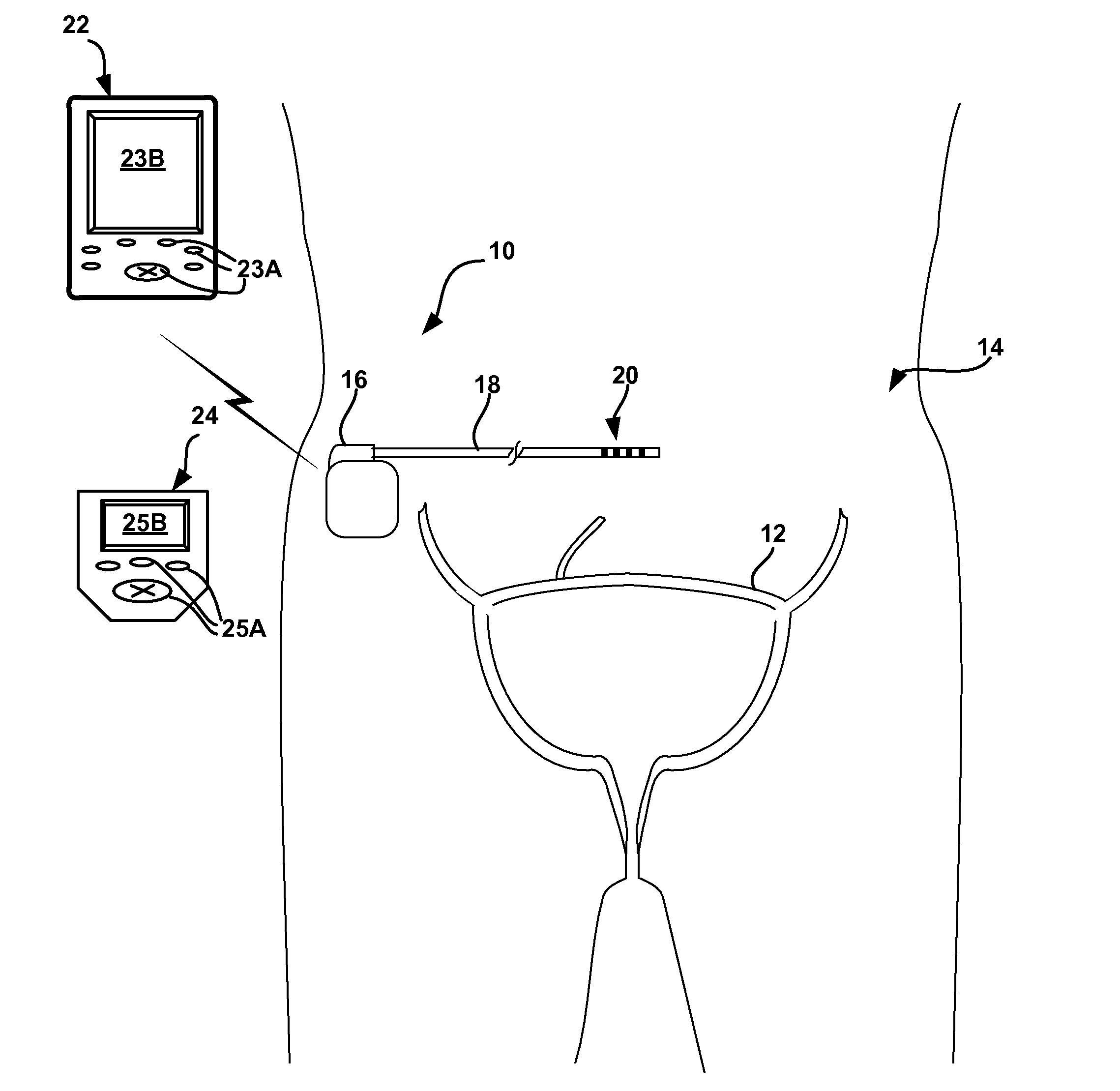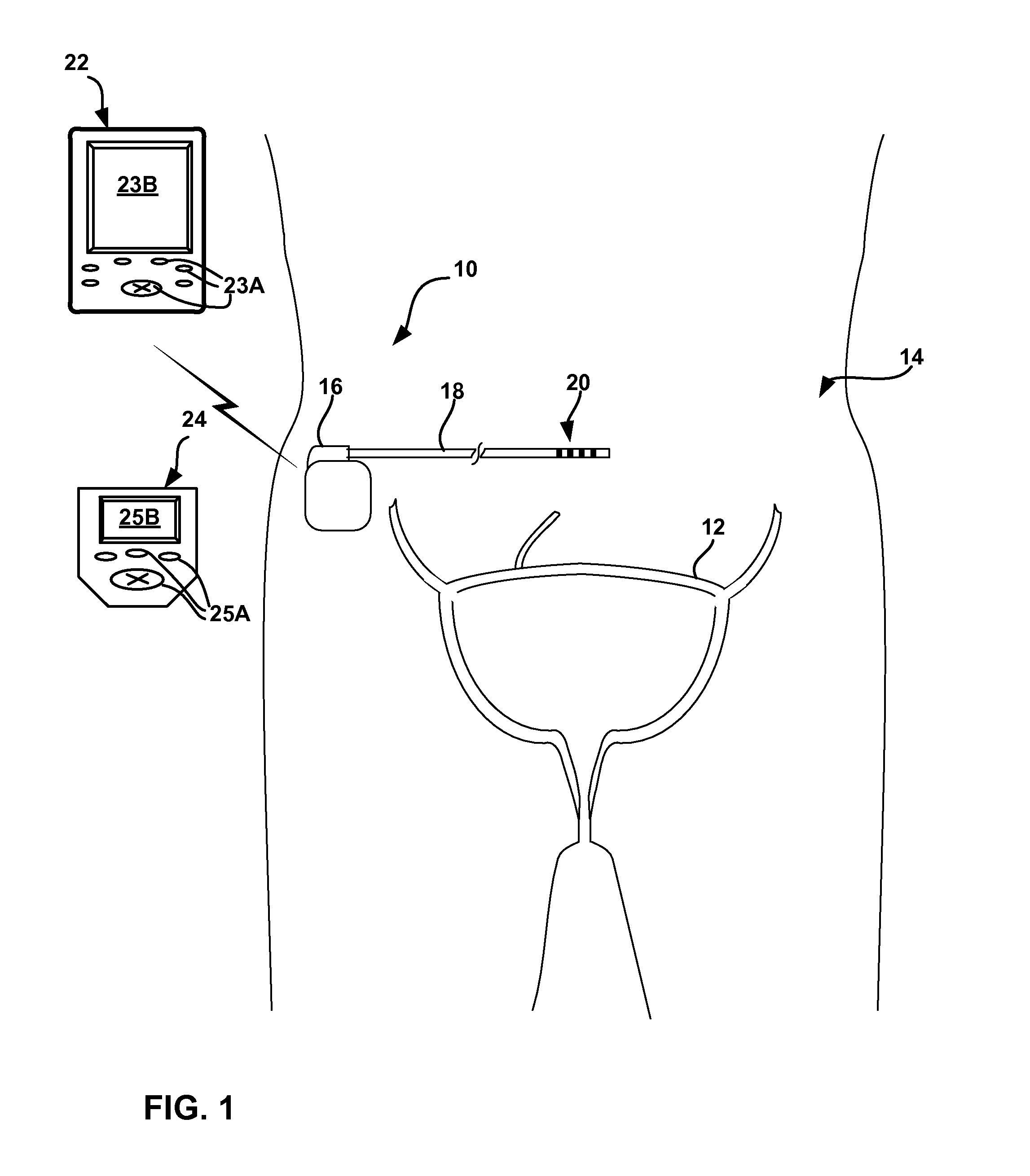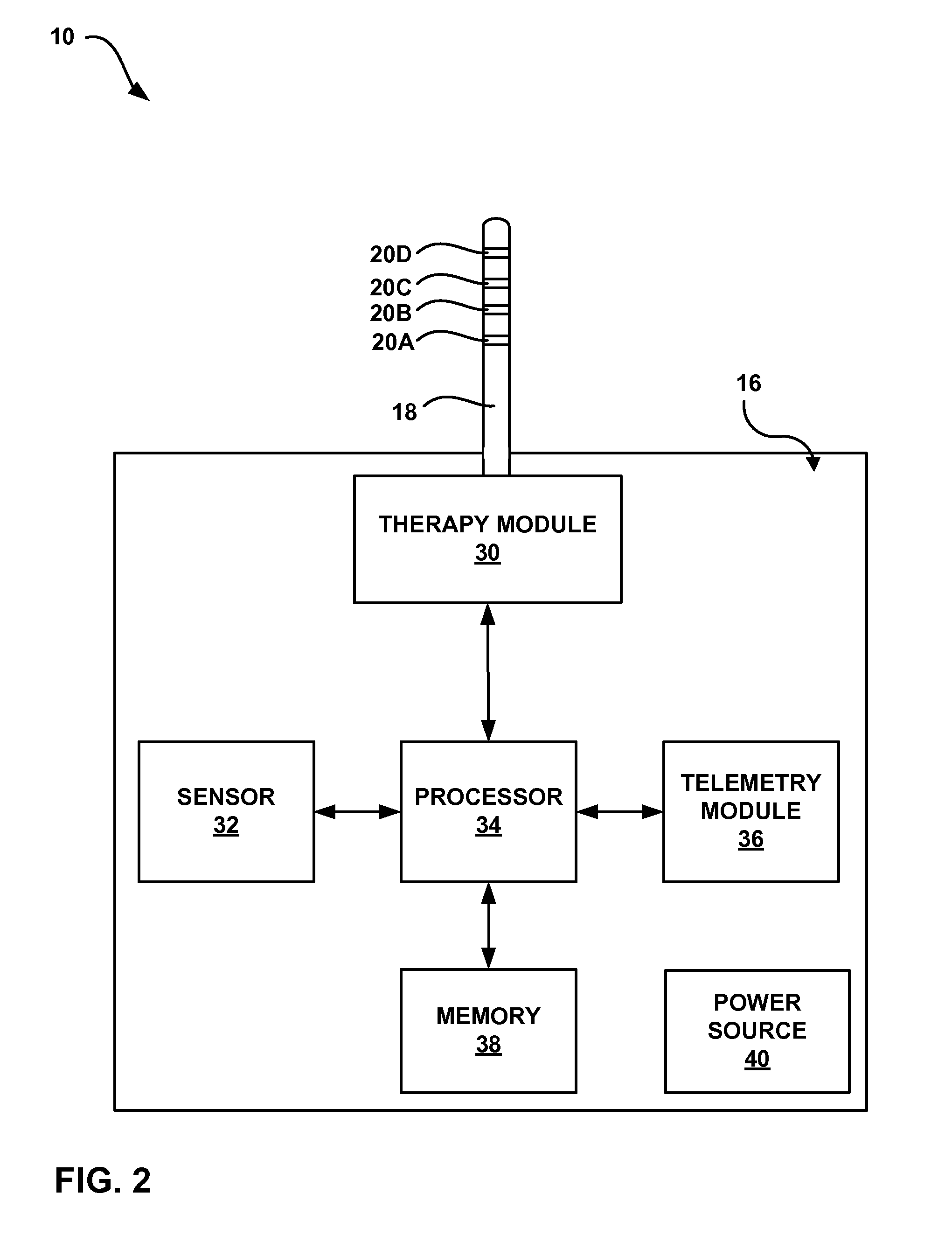Evaluating patient incontinence
a technology for incontinence and medical devices, applied in the field of medical device systems, can solve the problems of affecting the treatment effect,
- Summary
- Abstract
- Description
- Claims
- Application Information
AI Technical Summary
Benefits of technology
Problems solved by technology
Method used
Image
Examples
Embodiment Construction
[0025]Urinary or fecal incontinence is a condition that affects the quality of life and health of many people. One symptom of urinary incontinence is nocturia, which may also be a symptom of other problems, such as interstitial cystitis, diabetes, benign prostatic hyperplascia or prostate cancer. Patients afflicted with fecal incontinence may also experience a symptom similar to nocturia, and in particular, a need or urge to void during a sleep event. In general, the urge or need to void during a sleep event may be referred to as “sleep event voiding.” Sleep event voiding may disrupt a patient's sleep because of a reoccurring need or urge to void during a sleep state, which in turn may affect the patient's quality of life. The failure to get a full night of rest may adversely impact the patient's performance during the day, such as by causing fatigue or inattentiveness. While the remainder of the description primarily refers to nocturia, the present invention also applies to fecal i...
PUM
 Login to View More
Login to View More Abstract
Description
Claims
Application Information
 Login to View More
Login to View More - R&D
- Intellectual Property
- Life Sciences
- Materials
- Tech Scout
- Unparalleled Data Quality
- Higher Quality Content
- 60% Fewer Hallucinations
Browse by: Latest US Patents, China's latest patents, Technical Efficacy Thesaurus, Application Domain, Technology Topic, Popular Technical Reports.
© 2025 PatSnap. All rights reserved.Legal|Privacy policy|Modern Slavery Act Transparency Statement|Sitemap|About US| Contact US: help@patsnap.com



